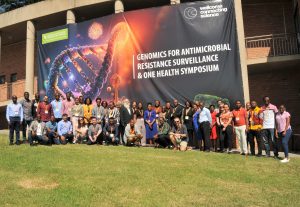South Africa leads the rest of Africa in Science, engineering and technology. In April this year, ahead of the football madness, Reuters published its Global Research Report on Africa and it highlights the leading role that South Africa plays in the research and development arena internationally. The report shows conclusively that Egypt, Nigeria and South Africa dominate scientific research on the continent. In order to measure scientific research, the report examines the number of papers produced over the period 1999-2008. The figures are interesting: Egypt produced 30,000 papers, Nigeria produced 10,000 and South Africa produced 47,000. In Reuters Essential Science Indicators' database, South Africa is ranked first or second in 20 of the 21 main fields that include subjects as diverse as biology and biochemistry or space science. South Africa's most highly-cited papers pertain to climate change and its effects on plant propagation. South Africa's share of the geosciences section is in keeping with the country's mineral richness. However, as the researchers point out, the volume of published papers is just one indicator of research activity and of the research capacity in each region. Moreover, the bigger countries, with larger economies are likely to produce more papers than the smaller and poorer countries. To overcome this imbalance, the researchers compared the number of published papers with the gross domestic product of each country, reasoning that the proportionate investment in the knowledge economy is a good indicator of the government's commitment to resource development through science and research. The leading countries using these measurement criteria are South Africa, Egypt, Nigeria, Tunisia, Algeria and Kenya.
There is no doubt that South Africa is the outstanding research leader on the African continent, has by far the greatest research output of any country, well ahead of Egypt in second spot, and the research output has a high impact within the international scientific community. Perhaps this is not surprising given the widespread support that exists for scientific endeavours in South Africa. There is a huge range of resources that is available to academics, entrepreneurs, existing companies and specialised research organisations. Consider, for instance, the Department of Science and Technology's role in supporting science, engineering and technology at all levels from primary school to doctoral research projects. The diversity of the projects being supported through the Department of Science and Technology (DST) and the many research foundations, specialised organisations and private sector initiatives is just as huge. This department invests close to R5 billion annually in various different programmes and the main focus of its leadership activities focus on:
- Space science and technology;
- Hydrogen and energy;
- Biotechnology and health innovation;
- Innovation instruments and planning;
- Supporting the National Advisory Council on Innovation.
Added to this is the work that is done through other organisations such as the National Research Foundation (NRF) and the Council for Scientific and Industrial Research (CSIR), which has as its sole shareholder the DST. There are numerous, highly innovative and sometimes quite astonishing research and development activities in the following fields:
- Health, with a focus on nutrition and affordable, novel treatments;
- Natural environment with a specific focus on using the existing resources wisely and in a sustainable fashion; • Energy with a focus on alternative and renewable technologies;
- The built environment including issue of transportation and sustainable human settlements;
- Defence and security;
- Industry, focusing on advanced manufacturing and mining.
Added to this is the CSIR's own objective of building the research infrastructure that can be used and shared by other organisations around the country, including tertiary educational institutions and private sector industry. Some of the projects that have been developed or are being researched include:
- In the health sector, the CSIR has developed a novel, economically-competitive manufacturing process that will reduce the production costs of thymidine, a valuable intermediate in the preparation of AZT and stavudine used in first and second-line HIV therapy. A patent application has been filed on this technology and the commercial rights to exploit its use have been granted to an independent company.
- Other activities in the health sector include: developing research on two new anti-malarials; establishing GreenPharm to produce, from plants, a neutralising antibody for the rabies virus; and recording 250 claims by traditional healers for the use of medicinal plants in traditional remedies.
It's evident that the value of research and development in South Africa is not only viable in commercial terms but also has a tremendous impact on the quality of lives of people all over the continent. There are other similar organisations such as the Agricultural Research Council, Mintek, the mineral research organisation, the Human Sciences Research Council, the Medical Research Council and the Council for Geoscience. Added to this are organisations such as the Biotechnology Partnership for Africa's Development and the National Health Laboratory Service with more than 300 laboratories countrywide. South Africa's scientific infrastructure is, in African terms, awesome and, for a developing country, impressive but there is little doubt that much more needs to be done to foster the student population to enter the fields of science, engineering and technology. The research infrastructure for the scientific community exists and there are numerous innovations funds and tax incentives that have been set up to encourage greater investment in research and development. So, while the infrastructure and investment incentives are there, the question is, are these facilities being used properly and productively? In this regard the answer must be a slightly hesitant, but nevertheless resounding yes.




